Happy Valentine’s Day! I thought we should make this for a date night in… erm, three weeks ago. It was on my editorial calendar and everything! (Okay I don’t have one, but it was definitely something I would have put on one.) The fact is, I’ve always been a slow cook but I’ve gotten so much worse in the last year or so, and I think I’m just getting fussier. I can’t sleep well until I know I am not making you use even one more bowl or egg yolk than the recipe requires and I wish I was joking because it sounds more quirky and charming that way.
Take this. For years, I’d be hearing about the wonder that is Nancy Silverton’s Butterscotch Budino, one of Los Angeles’s most famous desserts. Think of it like a classic, homey butterscotch pudding (kinda like this) made as luxe as possible with more butter, a deeper caramel, egg yolks, cream, salted caramel, whipped creme fraiche, yes, I too would be on a flight to Los Angeles right now after reading that if they weren’t all grounded.

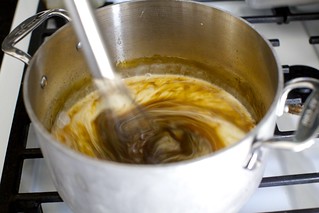

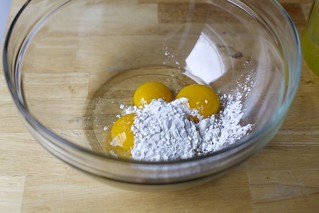
[Sidebar: A budino is a custard or an unbaked pot de creme and also a pudding, but an American pudding, a British pudding seems to be — and you can tell I find this confusing, no matter how much GBBO I watch, although I’d be happy to watch another 10 seasons (hint!) if that’s what it required — a dessert course that’s either pudding-as-we-know-it or steamed cake and also it can be savory too. Sorry, I digress. The place where budinos end and all of the other cold, pudding-like desserts begin aren’t rigid.]
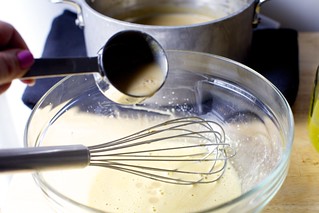
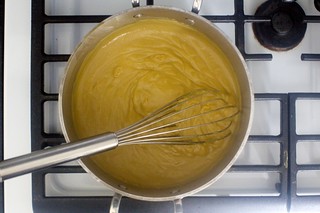
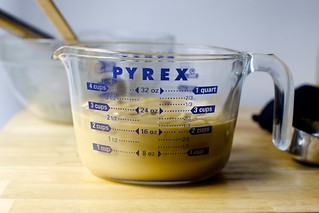
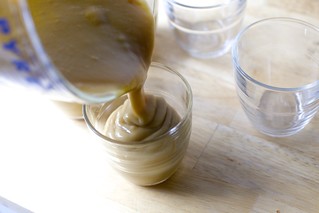
I finally made it, used every dish in my apartment, and it was glorious. We loved it. We shared it with friends, and I’d planned to share it with you and not too long ago I would have and that would have been the end of it but I couldn’t let go of how stressfully complicated it was. For good reason; it’s a restaurant dessert and restaurants can pull off things scaled up things we find exasperating at home on a smaller scale, with no line cooks and dishwashing staff at our disposal. Or at least no particularly useful ones.

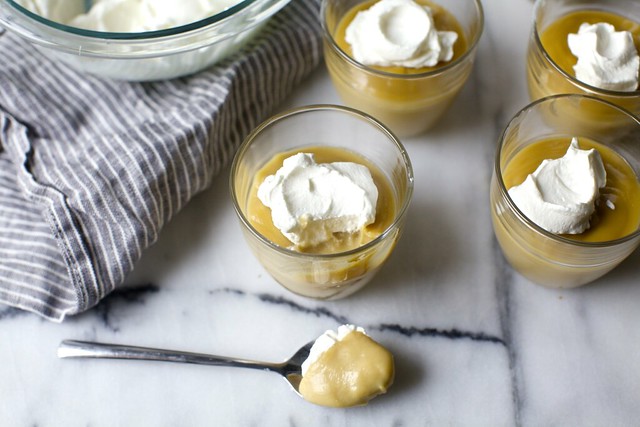
Over the next couple weeks, I reviewed almost every custard and pudding formula I’ve ever used or loved and realized I could make a few tweaks that made it a little less of everything. First, I trimmed down the serving size to 6 small cups. This is not a lot of pudding, but this feels so luxurious to us, it was all we needed. Absolutely double it if your crew, or craving, is larger. I used fewer bowls (just one plus the pot), fewer egg yolks, a higher proportion of milk to cream, and I found the resulting dessert so good, it didn’t even need the salted caramel on top.
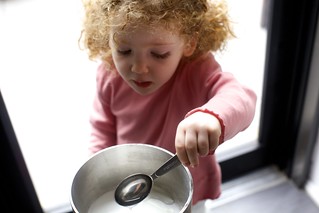
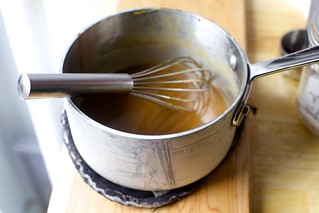
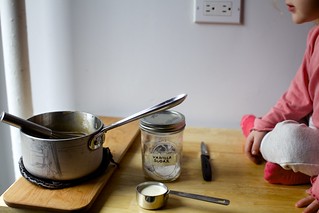
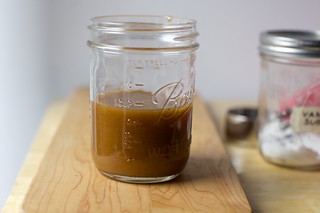
But, of course, it’s quite amazing with it, you know, when you want to be a little extra, like maybe because there’s a howling wind and sleetstorm outside and your weekend plans are derailed (a little extra rum in yours, in that case) and maybe if staying in tasted this good, we’d do it more often.
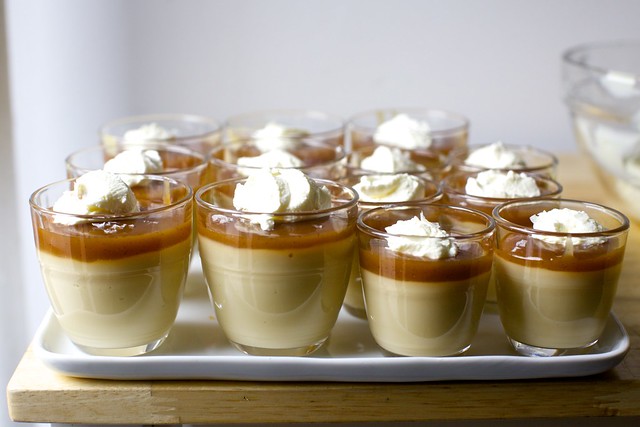

Luxe Butterscotch Pudding
Let’s talk about sugar: Classic butterscotch pudding is very sweet. Popular recipes on major food sites use up to 1/2 cup brown sugar per cup of milk or cream. I find 2/3 cup total for this recipe to be sweet but not excessive, but do know it works with up to 3/4 cup brown sugar, if you want a more classic butterscotch intensity. If you plan to put caramel on top, or if know you like your butterscotch pudding more mild, use only 1/2 cup brown sugar a smidge less salt. Finally, do note that the color comes from the brown sugar caramel: the less sugar you use, the more pale that pudding will be, which is fine, but just note it will not look like the pictures.
The caramel sauce makes a scant cup. It’s more than you’ll need. I have no idea what you’ll do with the rest; probably it will go to waste. At Mozza, Nancy Silverton heats the cream used for the caramel with the seeds from 1/4 of a vanilla bean before adding it to the sauce. I did it once this way, the second time used vanilla sugar instead of plain sugar, and the third time, skipped it altogether. Salted caramel, in my opinion, tastes good enough without it.
- 2/3 cup (125 grams) dark brown sugar [see Note]
- 2/3 teaspoon (or a heaped 1/2 teaspoon) kosher salt
- 1/4 cup (60 ml) water
- 1 cup (235 ml) heavy cream
- 1 cup (235 ml) milk (whole or lowfat work here)
- 2 tablespoons (15 grams) cornstarch
- 2 large egg yolks
- 1 large egg
- 3 tablespoons (45 grams) unsalted butter
- 1 to 2 teaspoons (5 to 10 ml) vanilla extract
- 1 to 2 teaspoons rum (optional)
- 1/2 cup plus 2 tablespoons (125 grams) granulated sugar
- 2 tablespoons (30 ml) water
- 2 tablespoons (30 grams) salted or unsalted butter
- 1/2 cup (120 ml) heavy cream
- Flaky sea salt, to taste
- 1/2 cup heavy cream
- Sugar, to taste, if desired
- 2 tablespoons creme fraiche or sour cream (optional)
Pudding
Salted Caramel (optional)
To finish
Make the pudding: Stir the brown sugar, water, and salt together in the bottom of a medium, heavy-bottomed saucepan. Turn the heat on to medium-high and cook the mixture without stirring until it’s dark brown and smells caramelized, 8 to 10 minutes. Whisk in the cream (it’s going to hiss and bubble dramatically), then milk. The butterscotch is going to firm up when the cooler cream/milk hits it, but bring the mixture back to a boil, stirring all the way into the corners, and the butterscotch will liquefy again.
In a medium bowl, whisk the egg, egg yolks, and cornstarch. Very slowly drizzle in 1 cup of the butterscotch mixture, whisking the whole time. The bowl should feel warm, but if it does not, keep drizzling in butterscotch and whisking until it does, then whisk this back into the mixture still in the saucepan. Return the saucepan to the stove over medium heat, whisking constantly, until it comes to a bloopy, slow simmer. Whisk it, simmering, for 1 to 2 minutes; it should thicken fast.
Remove pot from heat, whisk in butter until it melts, then rum, if using, and vanilla — you can start with 1 teaspoon and add the second if you want a stronger flavor.
Pour pudding into 6 small cups (I use these glasses) and chill in fridge until fully cool and set, a few hours or overnight. If you’d like to prevent a pudding skin on top, cover the glasses tightly with plastic.
Make the salted caramel, if using it: Once the puddings are mostly cool and set, you can make the salted caramel. Combine the sugar and water in the bottom of a medium, heavy-bottomed saucepan, then turn heat on stove to medium-high and cook without stirring (but you can gently tip the pan to gauge color) until the sugar takes on an amber color, about 10 minutes. Remove pan from heat and carefully whisk butter, then cream, into the caramel (it’s going to hiss and bubble dramatically, too). If the caramel firms, you can return it to stove to gently heat it until it melts again, but I didn’t find this necessary. Add salt to taste. Let caramel cool a bit, then spoon some onto the top of each pudding and let them finish cooling.
To serve: Beat cream and 1 teaspoon sugar, if desired, until it holds very soft peaks, then beat in creme fraiche or sour cream, if desired, which should finish thickening the cream, but if it does not, gently beat for another minute until soft peaks form. Dollop some on each pudding dish and eat immediately.
Source: http://feedproxy.google.com/~r/smittenkitchen/~3/8JBj_W2P44E/